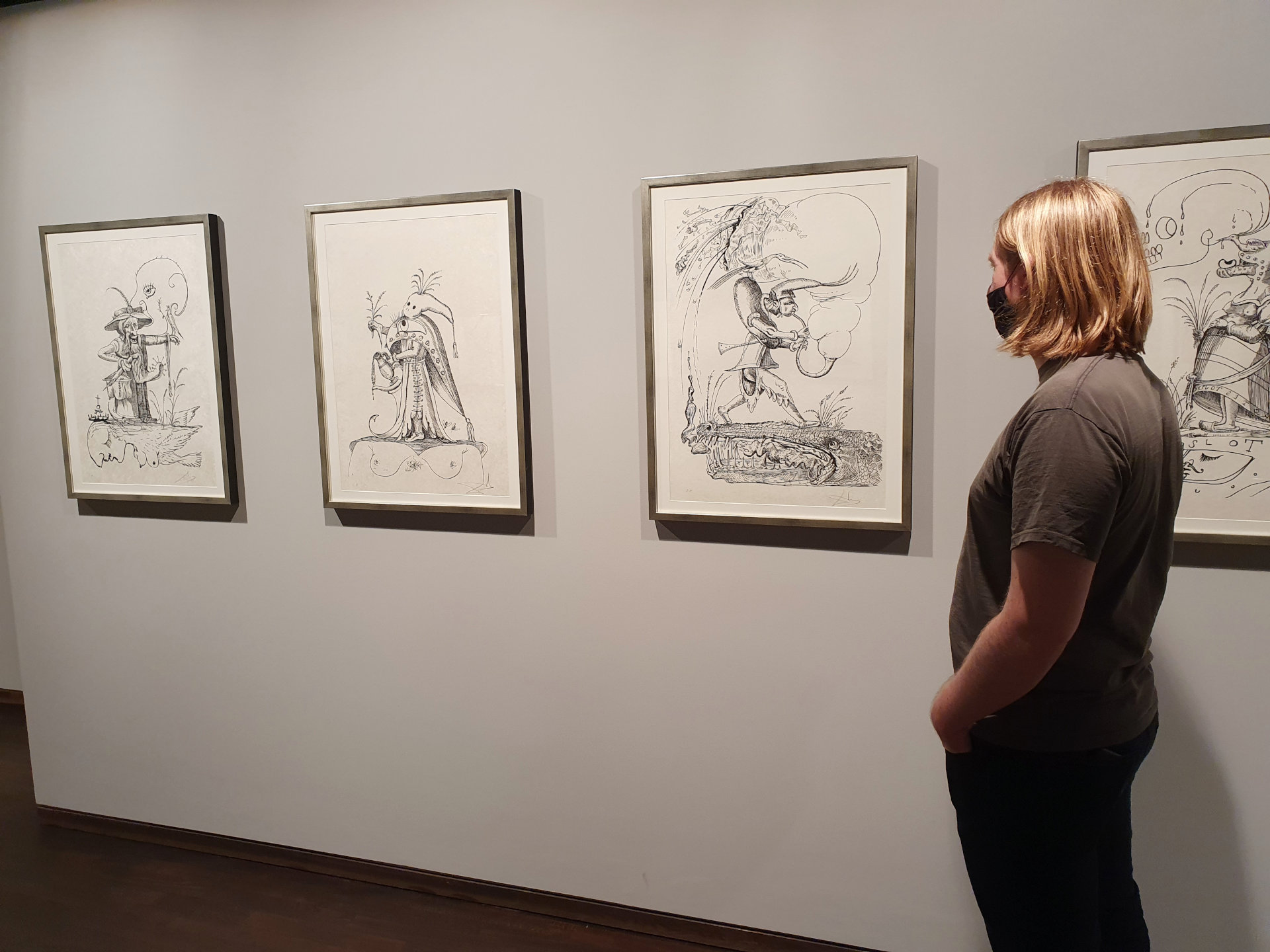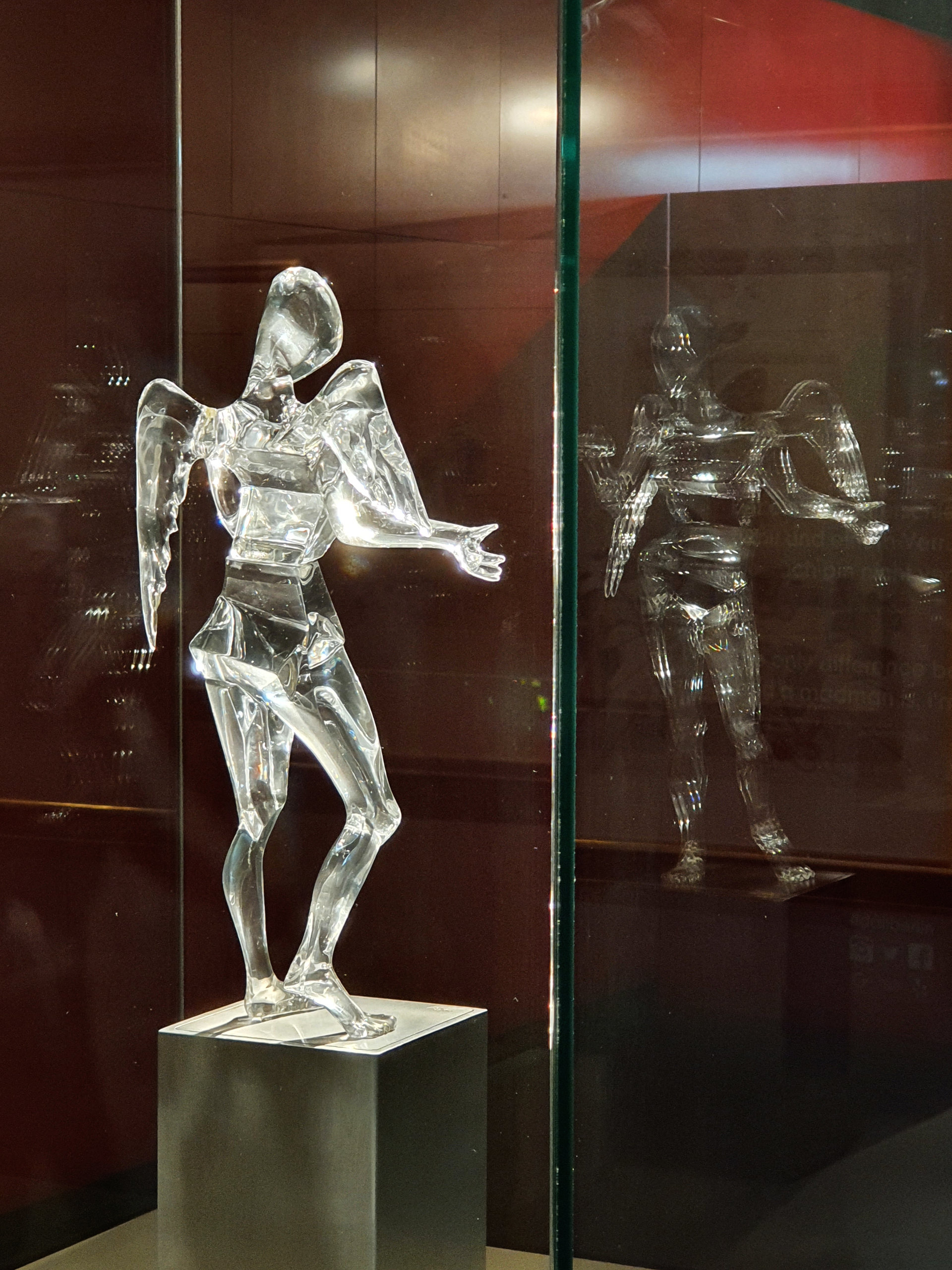After years of seeing its advertisements hanging from lampposts around the city, I finally visited Dali: The Exhibition on Potsdamer Platz in Berlin (at first a traveling exhibition, sedentary since 2009). Most of the hundreds of objects on display here are works on paper – mostly in printing techniques – supplemented by a few small sculptures and a video. It was thrilling to see these works after learning about the artist in the fabulous BBC documentary by Alastair Sooke!
Dali manipulated printing media to create astounding effects that often resemble watercolor or ink drawing. You can see this in the illustration at right, from the series he did for an Alice in Wonderland edition. Soft clouds of color combine with crisp black shapes arranged like a violent splatter. These same effects are omnipresent in Dali’s works on paper: flowing masses of color next to small, sharp, black forms evoking stretched shadows, insects, or calligraphy. Aha, there are those subconscious associations that the Surrealists were so keen on exhuming!
Another series of prints looks astonishingly like pen-and-ink drawings. Each picture focuses on a single figure with some hint of a landscape to stand on, and a Surrealist dose of body parts growing unexpectedly out of voids and objects. Some details reminded me strongly of the Surrealist parlor games, such as the exquisite corpse.
The printing technique of lithography is highlighted in one exhibit that shows, step by step, how a color print was made from many layers of single colors. An incomplete print hung on the wall is followed below by a print of the single color layer that was added to it in the next step. Below that is the print now featuring that layer. And so on – over more than fifteen steps! You certainly gain an appreciation for the complexity of the process.
A wonderful video by MOMA illuminates the complex process of lithography.
Several small-scale sculptures round out the display. The most ethereal (and best lit!!) has to be this winged figure right near the exit (and gift shop). Although it is hardly as typical of Dali as the many other works shown here, it reminds us of the artist’s wide-ranging interest in media of all sorts. This included commercial ventures like television ads and, as our wonderful tour guide Anneke told us, the wrapper design for Chupa-Chup lollypops! You’ll find those in the gift shop too, of course.
Overall, this museum contains perhaps the least text I have ever seen in a museum. Individual works have essentially no decipherable labels; series are named in a simple title and date. This certainly suits the international, multilingual tourist audience – and it also aligns with the Surrealist desire to uncover pan-human experiences, in part by inviting viewers to interpret artworks however they (and especially their subconscious) see fit. Even so, the 45-minute tour is a supplement that is definitely worth considering; our tour guide was incredibly enthusiastic and knowledgeable.
Have you had a Surrealist experience in a museum? Let me know in the comments section below – I’d love to hear from you!




